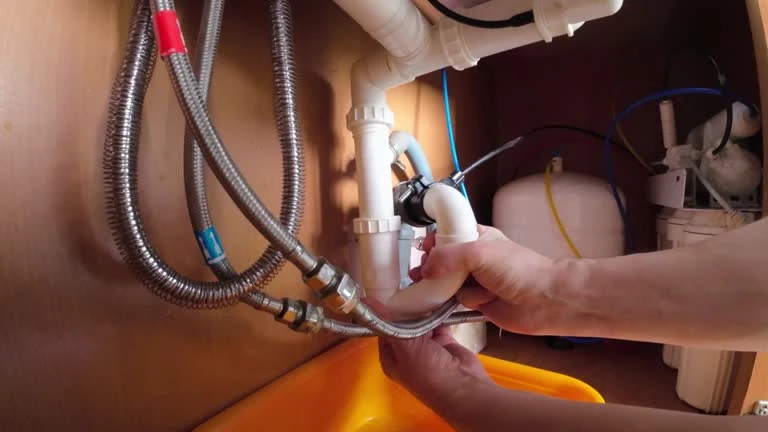Introduction to Ball Valve Failures
Ball valves are crucial components in various industries. They control the flow of fluids efficiently. However, these valves can fail due to various reasons. Diagnosing failures quickly is essential to prevent downtime. In this article, we will explore common failure modes of water treatment valve. We will focus on water treatment valves and their unique challenges. Understanding these failures helps in effective troubleshooting.
Common Causes of Ball Valve Failures
Several factors contribute to ball valve failures. One common cause is wear and tear from frequent use. Over time, valve seats and balls can degrade. Another cause is improper installation. Misalignment can lead to operational issues. Environmental factors, such as temperature and pressure, also affect valve performance. For water treatment valves, chemical exposure can cause significant deterioration. Identifying these causes helps in diagnosing failures effectively.
Signs of Ball Valve Malfunction
Recognizing the signs of malfunction is crucial. Common indicators include leaks, unusual noises, and difficulty in operation. For instance, if a water treatment valve leaks, it may indicate a worn seat. Unusual noises, such as grinding or rattling, can signal internal damage. Additionally, if operators struggle to open or close the valve, it may be a sign of a problem. Early detection of these symptoms can prevent further damage.
Inspection Techniques for Ball Valves
Regular inspections are vital for maintaining ball valves. Visual inspections can reveal obvious issues, such as corrosion or leaks. Operators should also check for proper alignment during installation. Non-destructive testing methods, like ultrasonic testing, can assess internal conditions. For water treatment valves, periodic pressure testing ensures they can withstand operational conditions. Using these techniques helps identify potential problems before they escalate.
Troubleshooting Leaks in Ball Valves
Leaks are a common failure in ball valves. When diagnosing leaks, operators should first identify the source. Common leak points include the valve seat, stem, and body. In water treatment valves, chemical reactions may degrade seals. Operators can perform a simple soap test to locate leaks. Applying soapy water can reveal bubbling at the leak source. Once identified, operators can replace worn components to restore functionality.
Addressing Operational Difficulties
Operational difficulties can hinder the performance of ball valves. If a valve does not open or close smoothly, it may indicate internal damage. In water treatment applications, debris can accumulate inside the valve. Clearing blockages can often resolve the issue. Lubrication may also help improve the operation of the valve. If problems persist, operators may need to disassemble the valve for a thorough inspection.
Maintenance Practices for Longevity
Preventive maintenance is key to extending the life of ball valves. Regular cleaning and inspection help identify issues early. For water treatment valves, flushing the system can remove debris. Operators should also replace seals and gaskets as needed. Establishing a maintenance schedule ensures consistent performance. Training staff on proper valve operation can also prevent misuse. These practices contribute to the longevity of ball valves.
Conclusion: The Importance of Diagnosis
Diagnosing failures in ball valves is crucial for operational efficiency. Understanding common failure modes helps in quick identification. Regular inspections and maintenance practices can prevent many issues. For water treatment valves, recognizing the unique challenges they face is essential. By focusing on proper diagnosis, facilities can minimize downtime and maintain productivity. Ultimately, investing in quality valves and proper maintenance pays off in the long run.
IFAN Products international standards
IFAN products strictly adhere to a comprehensive range of international standards, encompassing ISO 15874, EN 15874, ASTM F2389, DIN 8077/8078, GB/T 18742, NBR 15884, ISO 15494, EN ISO 15494, GB/T 19472, NBR 15494, ASTM 2846 (501), DIN 8079/8080 (502), ASTM F441/F441M SCH80 (503), DIN (504), DIN (505), GB/T 18993, AS/NZS 1477, CSA B137.6, NSF/ANSI 14, TIS 17-2532/1131-2535, BS 3505, BS 4346 (801), ASTM D1785 SCH40 (802), ASTM D1785 SCH80 (803), DIN (804), GB (805), GB (806), GB(901), DWV(902), ASTM D2665 (903), along with ASTM D2241, D2665, D2729, and F441/F441M series, ISO 1452, EN ISO 1452, DIN 8061/8062, GB/T 10002, AS/NZS 1477, JIS K6741, CSA B137.3, and other national and industry norms.
Connect
IFAN is a Chinese manufacturer of plastic pipes, fittings and valves with 30 years of experience. If you are interest in IFAN copper fittings, copper valves, plastic pipes and fittings, please contact us. IFAN offers you a variety of standard pipes to meet your specific needs. Click below to learn more about IFAN’s wide range of affordable and cost-effective valve products and piping system related products.
We will reply your email or fax within 24 hours.
You can call us at any time if there is any question on our production.
For more information,pls visit our webside https://waterpipefitting.com/
Pls Mailto: [email protected]
Whatsapp: + 86 19857948982














Recent Comments